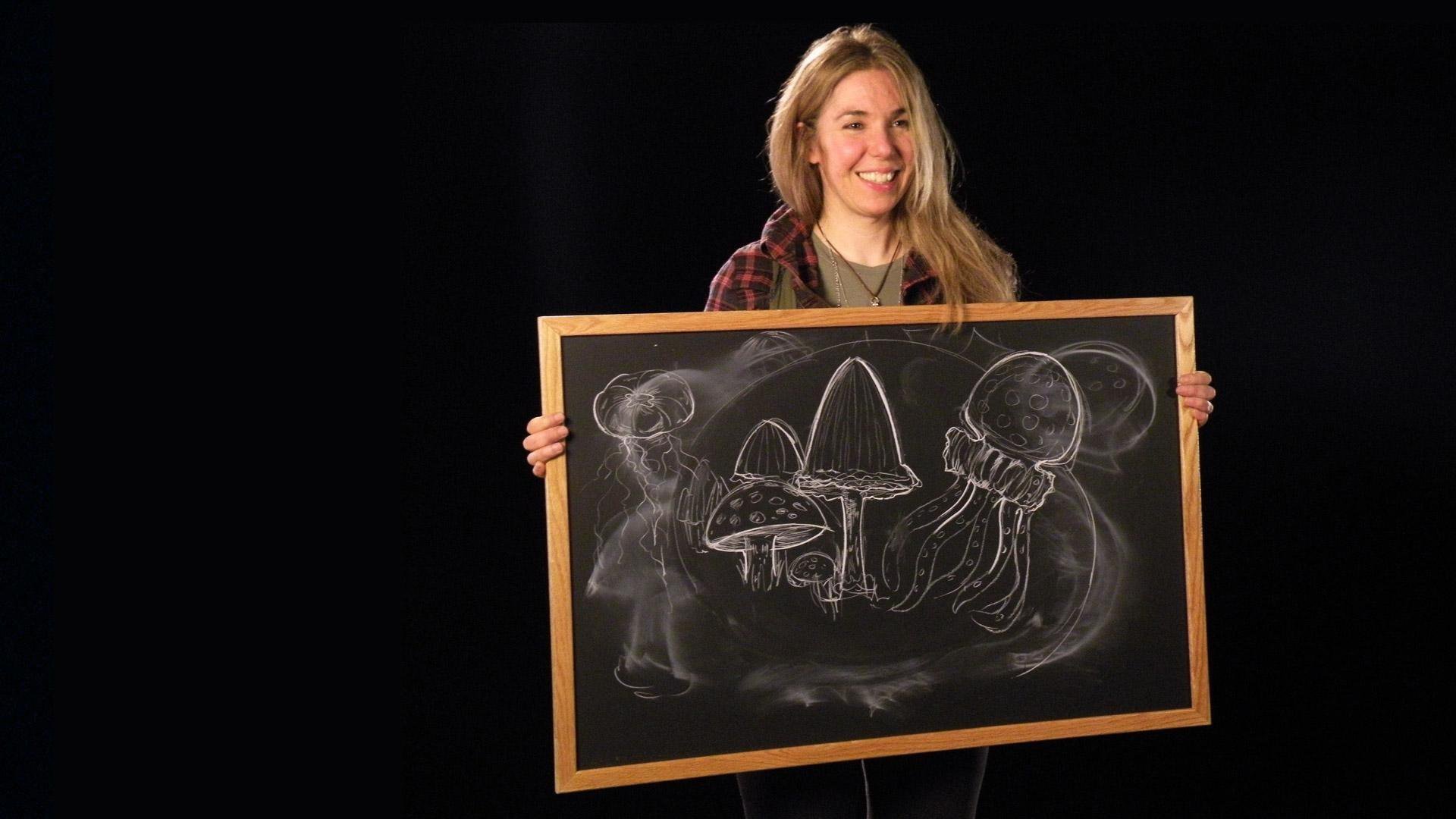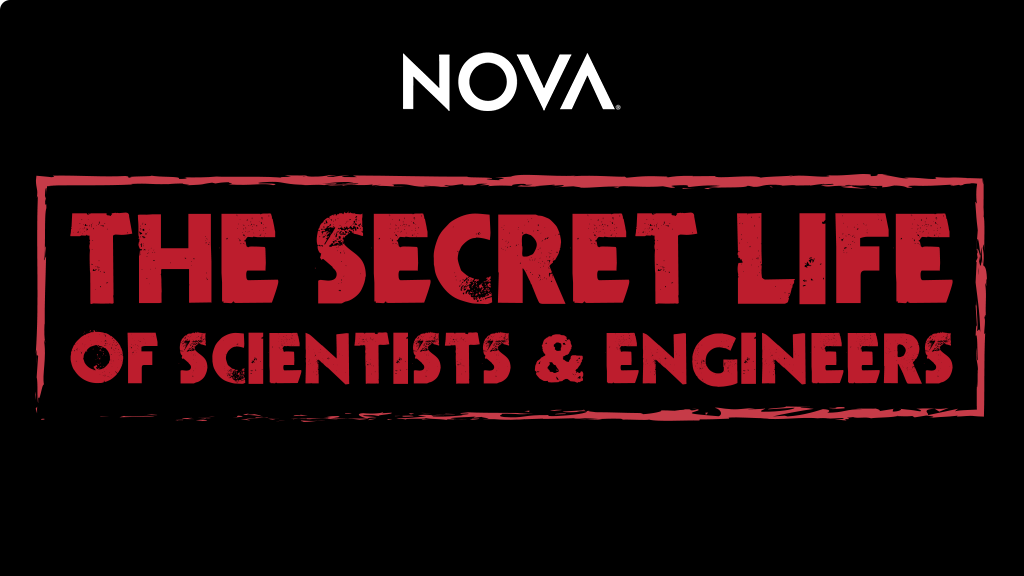Caryn Babaian
Caryn teaches Biology at Bucks County Community College in Pennsylvania.

Meet biology professor Caryn Babaian in these videos, blog posts, and interviews from NOVA's "The Secret Life of Scientists and Engineers." Caryn is inspired by Leonardo da Vinci's notebooks, and uses art to help her students learn about biology and living systems.
"The person who draws a leaf will tell you a lot more than the person who just looked at it."
Science:
Caryn Babaian is a biology teacher who makes her students draw living things to engage with the world around them. She also shares an accent with Rocky Balboa.
Secret:
Caryn is an artist who loves everything about Da Vinci and learns a lot from slugs.
The Art of Science
Caryn Babaian teaches Biology by having her students draw Charlie Brown.
Leonardo and I
Caryn Babaian falls in love with Leonardo da Vinci.
30 Second Science with Caryn Babaian
We give Caryn Babaian 30 seconds to describe her science and she amazes us by doing it in 20.
10 Questions with Caryn Babaian
Drawn by hand
Technology is awesome. But sometimes the simplest kind of technology can be the very best one for the job.
Caryn Babaian teaches biology at Bucks County Community College. And she has her biology students draw living things (and parts of living things) just about everyday in her classroom.
Not only that, she has them draw old-school style… pencils and sketchpads only. As Caryn explains in one of her videos, “art captures the elusive and diverse quality of life.” But then again, there are all kinds of art—videos, photographs, computer-generated images—that can show the most minute detail of virtually everything we experience in the world. What’s special about drawing? What’s special about drawing living things with our own hands?
“I think hand drawing is unique because everybody has a slight variation of how they’re going to interpret phenomena," Babaian says. "When you look at graphics and all that other stuff they do in 3-dimensional models, you get this very slick perspective of life. And what you see art-wise and image-wise, influences the way you think about life. With drawing by hand, if you’re the person who’s doing it, you have the ability to create a lot of subtleties in organic form that machines can’t create and probably never will create. And those subtleties are significant because they reflect the complexity of living systems. So, that’s why hand drawing, I think, has it over graphics, when it comes to living things.”
My take on what Caryn said here is that hand drawing is a lot about the interaction between the person drawing and the subject. And that interactivity is clearly a great tool in the classroom—students are engaged because they get to build what they’re learning. Now of course, I’d never deny (and neither would Caryn) that there is a time and place for all the fantastic technology we human beings have created. But I do think that if you want to learn about another living thing (and most especially, your connection with it), you may want to follow Caryn’s advice—that is, get out your pencil and sketchpad.
What Leonardo's legacy means to Caryn Babaian
NOVA’s “Secret Life” was something that automatically resonated with me as a life science educator and an artist for two reasons, first of all the idea of a “secret life” really explores the idea of a polymath.
The second reason was the program’s staff spent hours interviewing me to reveal and visualize just a snippet of a story. This is very much like creating art and doing science, hours, days, years, a lifetime are often spent absorbing, connecting, and relating to something before you ever produce a skill, an idea, or something of meaning. It verifies that process is fundamental to deep knowledge and it was fun to do!
My relationship with living systems and the planet exists primarily through my experiments in art with my subject—life—and there is a volley going on between what’s “out there,” and “what’s in us.” We are fundamentally organically expressed genes that were (genome) and are (epigenome—and who knows what else?!) continually sculpted by the planet. To get to know the unquantifiable, that is life, you have to engage your own creative ability, appreciate that skill, and have a deep respect for all living things. This is what Leonardo DaVinci taught us. DaVinci loved animals, plants, and creativity, and he had something E.O. Wilson termed “biophilia.” This is what made him a great scientist. We desperately need this in the teaching of life sciences today, more than ever. This “way of knowing and feeling” is present in all cultures and a reflection of diversity in general. The evolutionary synergy of ecology of place, the eye, the hand, and the brain link us to all other living systems. All teaching to some degree is theater and, of course, content. Trying to depict systems as alive is a challenge, and one that art is extremely well suited for. My art is how I get to know, teach, and understand living systems that are undergoing constant transformations, transitions, and fluctuations. Art is a non-invasive tool for reconnecting on a regular basis with the mystery of life, including your own.



